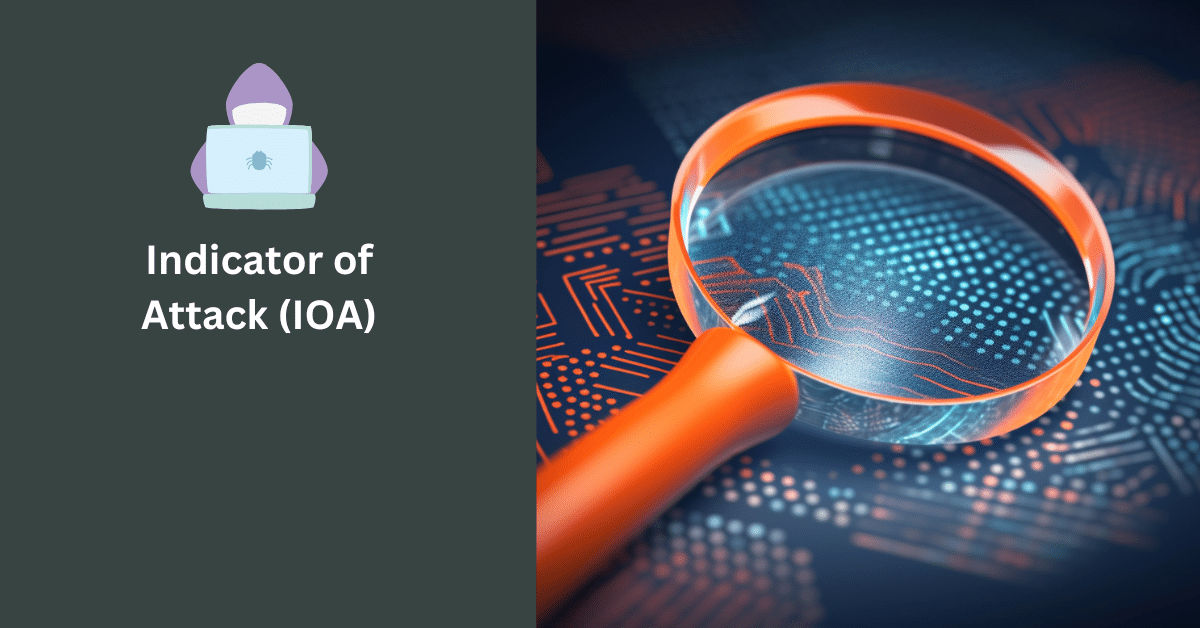In the vast world of cybersecurity, one crucial concept that all security professionals must understand is Indicator of Attack (IOA). Unlike the commonly known Indicators of Compromise (IOCs), IOAs provide real-time threat detection. This comprehensive guide will walk you through the critical aspects of IOAs and their role in enhancing cybersecurity.
Understanding Indicators of Attack (IOAs)
Indicators of Attack (IOAs) are pieces of information or signals in a network that suggest an ongoing attack. They signify that an attacker is attempting to exploit a potential vulnerability in your system or network. IOAs offer real-time detection and can help security professionals to identify and prevent cyber threats before a compromise occurs.
Difference Between IOAs and IOCs
While both Indicators of Attack (IOAs) and Indicators of Compromise (IOCs) play essential roles in cybersecurity, they differ significantly in their functionality and focus. Here’s a clear distinction between the two:
| IOAs | IOCs | |
|---|---|---|
| Focus | Focuses on detecting an ongoing attack | Focuses on identifying a successful compromise |
| Time | Provides real-time detection | Detects breaches after they have occurred |
| Role | Preventive measure | Incident response and forensic analysis |
Why Are IOAs Important?
- Real-time Detection: IOAs allow for real-time detection of a potential breach, enabling security teams to take preventive measures promptly.
- Proactive Defense: By focusing on an attacker’s actions, IOAs provide a more proactive defense strategy than traditional reactive methods.
- Early Threat Detection: With IOAs, it’s possible to spot malicious activities in their early stages, often before any harm has been done.
How To Detect IOAs
Detecting IOAs involves looking for patterns or anomalies that signify an active attack. This could include:
- Network Anomalies: Unusual outbound network traffic, unauthorized logins, or abnormal data transfers.
- File Changes: Unauthorized changes to system files or directories.
- Policy Violations: Multiple failed login attempts, attempts to gain escalated privileges, or other policy breaches.
Implementing IOA Detection
Several tools and strategies can help in the detection of IOAs:
- Intrusion Detection Systems (IDS): These systems monitor network traffic for suspicious activity and known threats, providing real-time analysis of inbound and outbound network data.
- Security Information and Event Management (SIEM): SIEM systems provide real-time analysis of security alerts by applications and network hardware. They can be configured to monitor for specific IOAs.
- Endpoint Detection and Response (EDR): EDR tools monitor endpoint and network events and record information in a central database for further analysis, detection, investigation, and reporting of threats.
Enhancing Cybersecurity with IOAs
Organizations can enhance their cybersecurity by integrating IOA detection into their security protocols. This involves continuous network monitoring, regular system audits, and using advanced threat detection tools.
By understanding the nature of an attack, security teams can proactively respond to breaches, mitigate damages, and strengthen their defense systems against future attacks.






